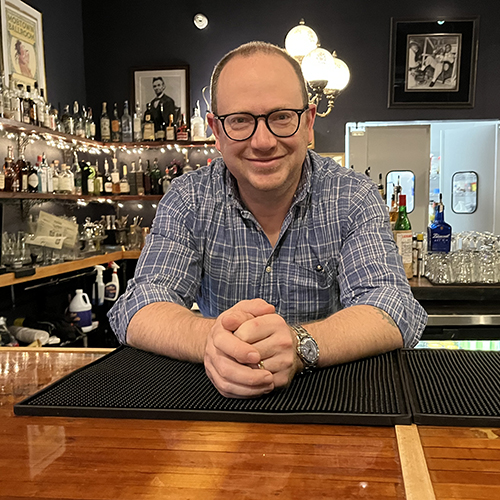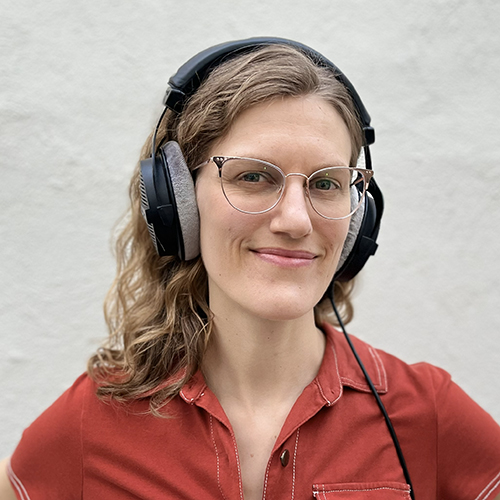Imagine you’re granted three months or more to immerse yourself in an ambitious project. What would you do? And where? Faculty taking a sabbatical might spend that time conducting field work in a far-flung location, or finishing a book project in a home office. Or even heading back to kindergarten.
Sara Goering, associate professor of philosophy, visited Seattle-area kindergarten classrooms during her sabbatical, meeting with pint-sized philosophers as part of the UW’s Center for Philosophy for Children. “Leading philosophical discussions with young children, my own enthusiasm for philosophy was rekindled,” she says.
Goering also spent time with scientists at the UW’s Center for Sensorimotor Neural Engineering (CSNE), exploring the ethical implications of implantable brain-computer interfaces being developed for people with spinal cord injuries, strokes, or other disabilities. She started working with CSNE prior to her sabbatical, but didn’t have time to fully immerse herself while juggling many other responsibilities. “Although scholarship and creativity can certainly happen in the regular course of teaching and research and administrative duties,” says Goering, “too often we get ideas but have little to no time to investigate them fully or to dedicate ourselves to their pursuit. Sabbaticals provide that time.”

UW faculty can apply for a sabbatical every seven years, requesting an approved leave of up to three academic quarters. Far from being an extended vacation, sabbaticals are an opportunity to pursue a project away from the distractions of campus. “Sabbaticals are an incredible opportunity,” says Judith Howard, A&S divisional dean for the social sciences and professor of sociology, who provides final approval of sabbatical requests in her division. “I look at the importance of the intellectual question at stake,” she says. “The work needs to go beyond what the faculty member has done before.”
...too often we get ideas but have little to no time to investigate them fully or to dedicate ourselves to their pursuit. Sabbaticals provide that time.
Not all professors apply for sabbaticals, and among those who do, many request one- or two-quarter sabbaticals rather than the full three quarters allowed, often for financial reasons. (Faculty receive their full salary if they take one quarter of leave; they receive increasingly smaller proportions of their salary if they take two or three quarters of leave.) Small departments may also find it difficult to spare faculty for a full year, since colleagues must fill in during their absence.
“Figuring out the timing of a sabbatical is like a Rubik’s cube,” says Diane Kendall, professor and chair of the Department of Speech and Hearing Sciences, who spent her two-quarter sabbatical teaching and conducting research in South Africa. “I had a spreadsheet of my daughter’s school schedule, all the PhD students I supervise, and my grants in relation to the academic year. I planned this sabbatical three years ahead based on exactly when the sweet spot was. It took that kind of planning.”
Kendall received a Fulbright Award to support her sabbatical teaching and research at the University of Pretoria, where she collaborated with a South African colleague who has complementary expertise. Together they studied aphasia — a disorder of language following a stroke — in bilingual populations, looking at how a person’s first and second languages are affected. Beyond the research and teaching, Kendall found the immersion in another culture to be invaluable. “It’s an opportunity to live out of the box,” she says. “It makes you more flexible. You have a grander view of the world, that you are a world citizen. And having that time for reflection and contemplation has made me more purposeful and strategic in my own career.”

Not everyone leaves town during their sabbatical. Hedwige Meyer, senior lecturer in French and Italian Studies, hunkered down during her one-quarter sabbatical last winter, determined to complete the second edition of a student activities manual that accompanies a textbook for French language students. “It was very time-consuming,” she says. “I basically worked seven days a week, all day long and into late evenings, for three months. Without a sabbatical, it would have been completely impossible to realize this huge project.”
David Brody, professor of art, faced a similar challenge. He had been approached to create a comprehensive course on drawing for The Teaching Company/The Great Courses, which publishes DVD and downloadable college-level courses. The project involved researching, writing, and filming 36 half-hour lectures for a broad audience. To prepare, Brody read or reread books by dozens of acclaimed artists and illustrators, from old masters like Leonardo da Vinci and Albrecht Dürer to contemporary artists. The sabbatical allowed this time-consuming exploration of the subject. “I bought scores of books that had been on my wish list for years,” says Brody.

Though Brody’s online course will be released in November, his UW students are already benefiting from his sabbatical work. “After the sabbatical, I applied much of what I’d learned to the UW courses I was teaching,” he says. “Having the time to think and reflect allowed me to become a more knowledgeable resource for my students.”
That sentiment is echoed by other faculty who believe their sabbatical research improves their teaching. James Clauss, professor of classics, spent his sabbatical working on a book project about the gods in epic verse and participating in an exchange program at the University of Ljubljana in Slovenia. He believes that discussing his sabbatical research in the classroom provides a glimpse of what classics research can be and sends a powerful message to students that learning never stops. “I hope to model passion for inquiry for the students,” says Clauss. “In that sense, both the content and process of my research become important teaching tools for me.”
Beyond the research and travel, sabbaticals are a rare opportunity to disengage from the many demands of academia. This, too, can benefit students. Like dedicated parents, faculty tend to appreciate their students more after a brief respite.
“I have felt rejuvenated this past year, having had that time away from teaching to be able to focus on my own writing and research,” says Goering, who took her sabbatical in 2013-2014. “I reveled in being able to read a whole book in a day and write about it, without interruption. Of course, once I was back to work, it felt great to be back in the classroom and to get to know students again. But having a year away from everything but the research was incredibly rewarding and fruitful.”
More Stories

A Love of Classics and Ballroom
Michael Seguin studied Classics at the UW and now owns Baltimore's Mobtown Ballroom. The two interests, he says, are more connected than they might seem.

Bringing Music to Life Through Audio Engineering
UW School of Music alum Andrea Roberts, an audio engineer, has worked with recording artists in a wide range of genres — including Beyoncé.

A Sports Obsession Inspires a Career
Thuc Nhi Nguyen got her start the UW Daily. Now she's a sports reporter for Los Angeles Times, writing about the Lakers and the Olympics.